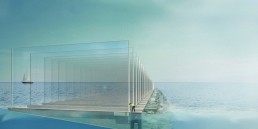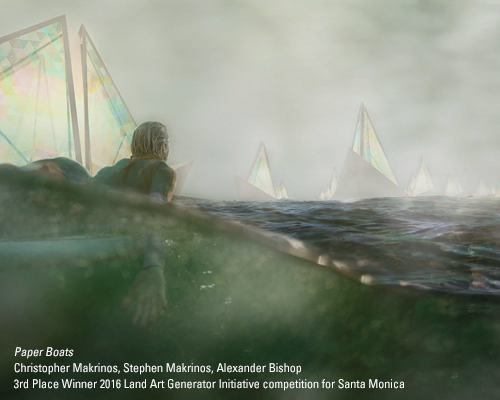
Paper Boats, Third Place winner of the 2016 Land Art Generator Initiative design competition for Santa Monica
Artist Team: Christopher Makrinos, Stephen Makrinos, Alexander Bishop
Artist Location: Pittsburgh, USA
Energy Technologies: concentrated photovoltaic (CPV), reflectors, Holographic Planar Concentrator™ (HPC) technology developed by Prism Solar Technologies
Annual Capacity: 2,400 MWh
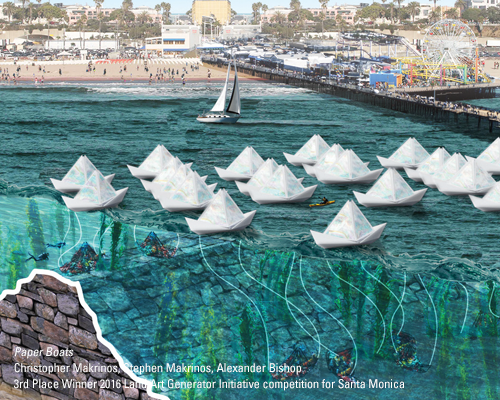
A shimmering, iridescent mirage of swirling whites, pinks, and greens floats playfully in a sinuous line resembling a school of fish. Paper Boats recalls the 1930s desire to transform the Santa Monica Pier into a thriving boating and yachting destination. The breakwater constructed at that time created a protected harbor, but has eroded over the years. Today it is almost completely submerged under the ocean surface.
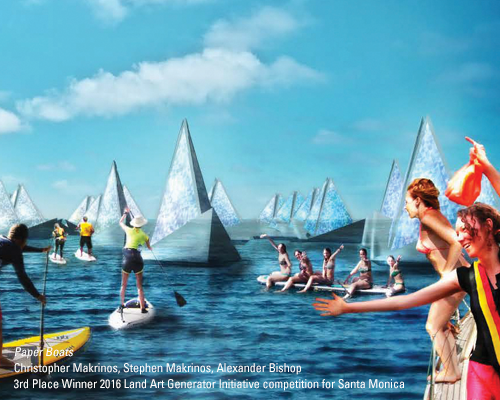
While recalling this history, Paper Boats revitalizes the ecology of the area. Throughout the years, over-hunting and over-fishing of some key species have allowed purple urchin to graze on the kelp without competition. This has led to “urchin barrens,” which offer little in the way of genetic diversity, food, or nesting habitats. Paper Boats has reversed this trend by establishing pockets of coral and kelp (once commonplace here) within underwater “shipwreck” frames that anchor each boat to the historic breakwater. The rebar “shipwrecks” mirror the sculptures above and encourage coral growth with a phenomenon called accretion. First observed by Wolf Hilbertz, accretion is a process where a trickle of direct current electricity (provided by the solar collector above) is run through the rebar to accelerate coral growth up to five times faster than normal.
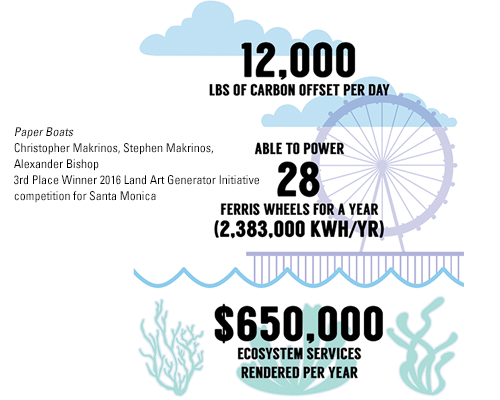
Paper Boats uses a combination of special Fresnel lenses, reflectors, and holographic photovoltaic cells. Each boat’s four sails work as concentrated photovoltaic collectors. The outer shell of the “sail” utilizes Fresnel lenses to channel incoming light.

Beneath the sails are a series of holographic photovoltaic cells that pair laser-etched glazing with bi-facial silicone panels to trap sunlight from both directions with incredible efficiency. The intricately cut patterns also refract light, giving them the shiny, iridescent quality that glows beautifully—especially at sunset.
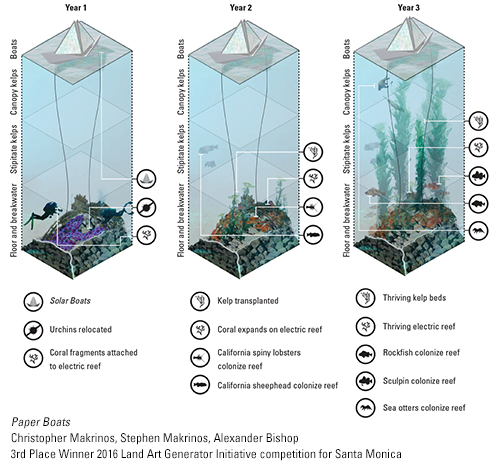
The solar panels are attached to a ceramic-cladded aluminum framework. The structure conceals the CPV conduits and acts as a passive heat sink. A trickle of energy is diverted to the “shipwrecks” before entering the main conduit. This small charge provides a catalyst for coral growth, strengthening the local marine ecosystem.
